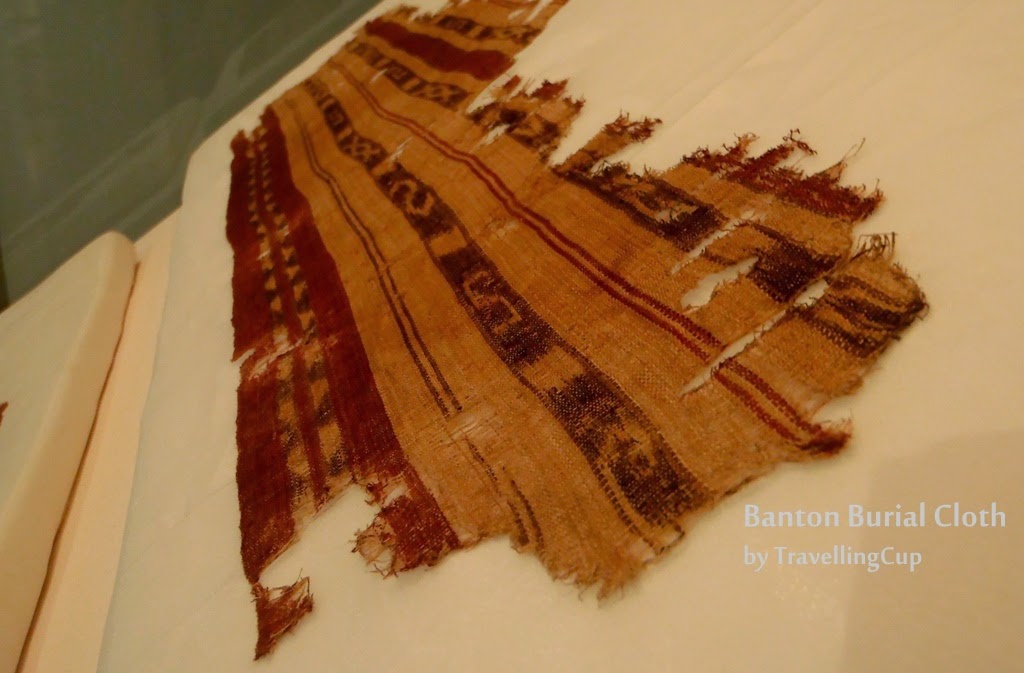This is part of my Oktubre ang Buwan ng mga Museo
One of the artifacts that got my attention in the Philippine National Museum was the Banton Burial Cloth, not just because of its historical value and age - but because it was discovered in my province - Romblon. Few years back, I read an article about this discovery and I thought this cultural treasure was brought to an International Museum for display. But I was wrong.
Banton burial cloth is considered as a type of an Ikat cloth, made of abaca fiber woven with complicated designs by the indigenous weaving method in Southern part of Mindanao and Indonesia. It is the oldest textile in the Philippines and the earliest existing specimen
of warp tie-dyed textile in the Sourtheast Asian region. This was found in one
of the wooden coffins (photo below) inside a disturbed cave in Banton Island. The side, a
cave complex, was already known as early as 1937. A local from Romblon, Zoilo
Festin, reported the side to the National Museum, and a team led by Alfredo E.
Evangelista and Avelino Legaspi went to the place on April 22, 1966. Among their
finds in addition to wooden coffins were Chinese stoneware jars, Chinese and
Siamese Plates, bowls and ornaments, carnelian and blue glass beads, turtle she
combs and bracelets, modified coconut shell and bamboo that may as well be
flute. The estimated date of the assemblage was from 13th to early
14th century. Declared as a National Cultural Treasure on June 14,
2010. - information by Philippine National Museum
the Coffin carved with Serpent and Crocodiles head.
Like the old burial traditions in the country, it is one of the items of the indigenous
people in the Philippines that requires rites and rituals upon making and using
it. Today, the coffin and the burial cloth can be seen in the collection of the Philippine National Museum.



No comments:
Post a Comment